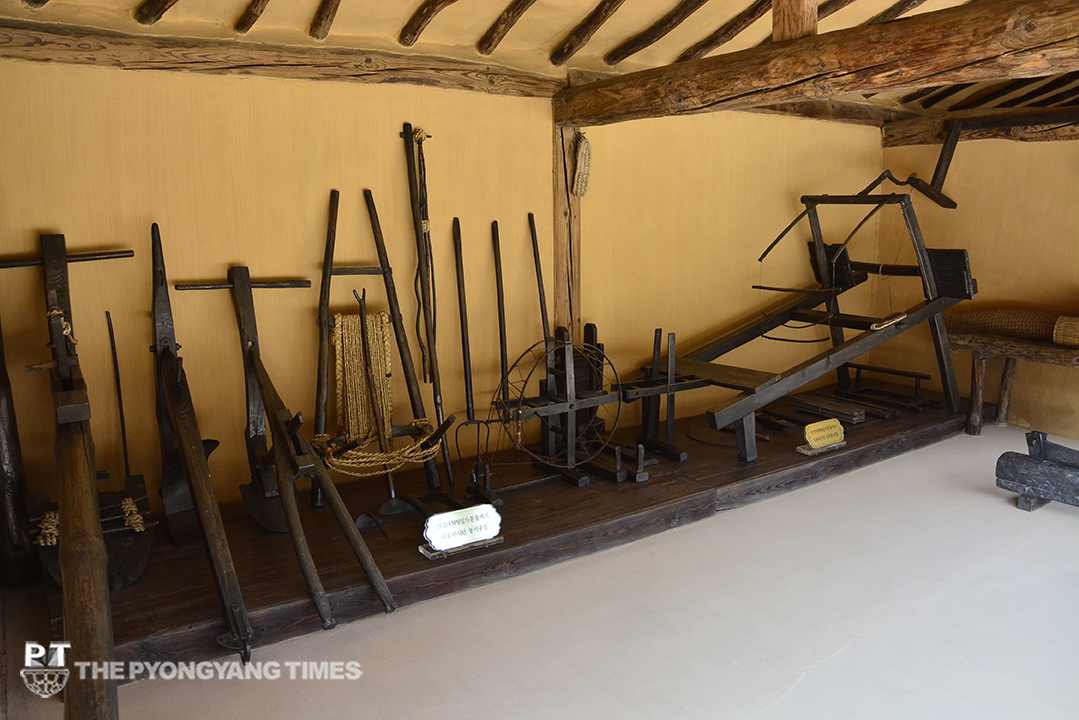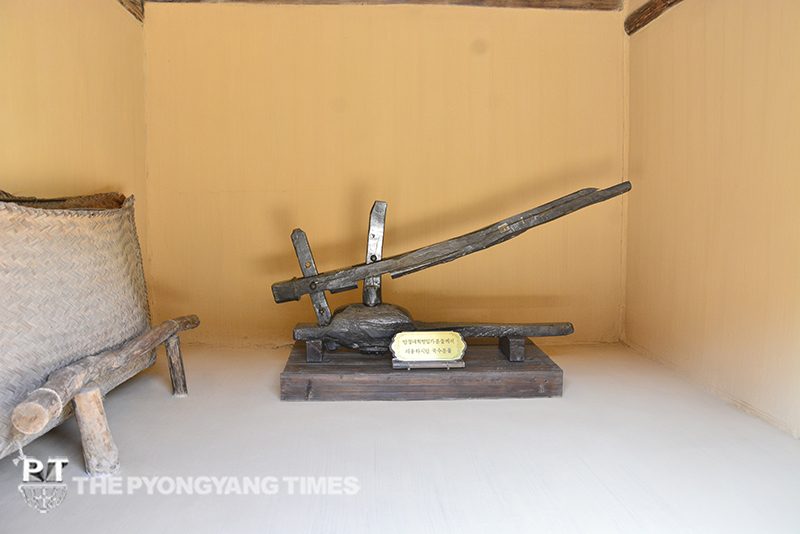Mangyongdae is the place where President Kim Il Sung was born and spent his childhood.
Preserved intact there are historic relics showing the qualities and personality traits of the President as a great man.
Warship Rock
At Mangyongdae there is Warship Rock on which young Kim Il Sung, together with his friends, played at soldiers against the Japanese imperialists, nurturing the great ambition of expelling the Japanese imperialists from the land of Korea and winning back the lost country.
He said to the children of his village that the large rock was a warship to capture the Japanese rogues and a small rock beside it was a small boat to guard the warship.
The large rock, to which everyone had been indifferent, was called warship rock from then on, and the shouts of the children playing at soldiers would resound around the rock.
When Kim Il Sung mounted the rock and called on the children to go to fight the Japanese aboard the warship, they shouted, “Charge!”, cheering and raising their spirits. He directed the play so skilfully that even the adults of the village would not leave the playing place readily, admiring him as fit to become a general in the future.
The rock still tells that Mangyongdae is the cradle of the outstanding military wisdom, commanding art, matchless courage and grit of the President who defeated two formidable imperialist powers in one generation.
Gramophone and books
At the Mangyongdae Revolutionary Museum are preserved a gramophone and books showing the great personality traits of young Kim Il Sung.
One spring day, his father Kim Hyong Jik borrowed a gramophone from the Walled City of Pyongyang to please the villagers. The villagers, who had never heard even the word gramophone, thought it mysterious, listening to it.
Kim Il Sung, however, did not think so. After the villagers had gone, he dismantled the gramophone and found out that it was operated by a mechanism.
He also read many books on the time-honoured history of Korea at his old home in Mangyongdae. The books were those which even people of average intelligence would find difficult to understand without some knowledge. He would sit up all night reading books on different fields, newspapers, magazines, etc., to acquire wide knowledge of nature and society. And he drew the admiration of people for his extensive socio-political insights.
Pine on Mangyong Hill and rainbow
One summer day in 1916, a clear rainbow arced over Mangyong Hill, its one end resting on the roof of Kim Il Sung’s old home. Seeing this, he climbed an ash tree in front of the home, trying to catch the rainbow before anybody could try to dissuade him. Shortly afterwards, he came down from the tree and hurried to the hill to climb a pine, reaching out for the rainbow. But the rainbow disappeared again beyond the hill.
Though he felt great dissatisfaction, yet he further felt love for the beautiful country with scenic mountains and clear rivers, and cherished a dream and ideal for the future of his country where the people would live happily without exploiters. In the spirit of the strong pine which maintains its green even if covered with snow and frost, he defeated the Japanese imperialists while crossing long miles of raging blizzards and bloody battles and liberated Korea. He then built a socialist state where the people are masters of everything as he had pictured in his childhood.
The pine on Mangyong Hill still stands, telling about the traces of the great man.










